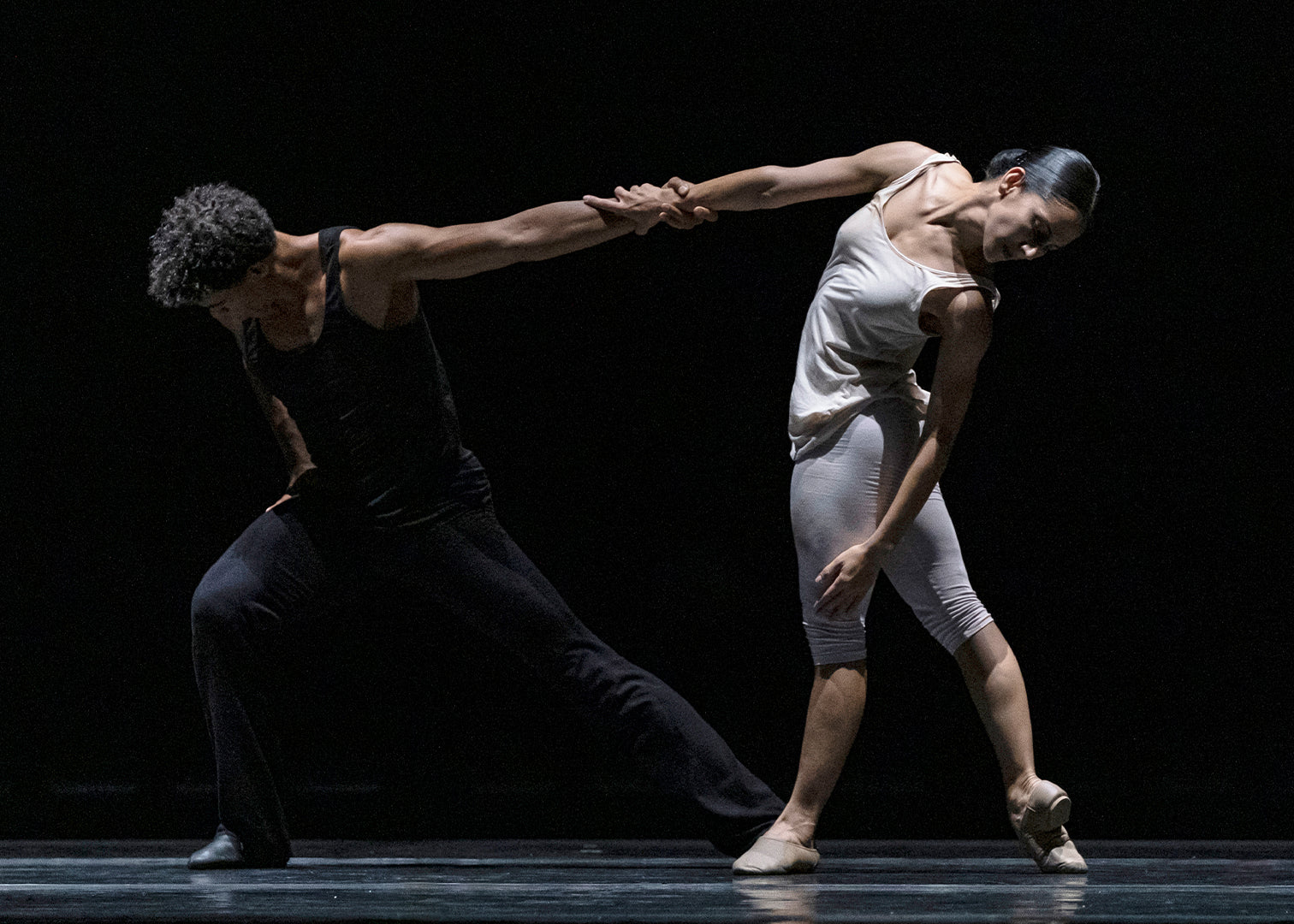But evidently Dorothy Gunther Pugh doesn’t care. Founder of Ballet Memphis and artistic director for its full three decades, Pugh organizes her commissions around big ideas: the river at Memphis’s side, the city itself, identity (yes, all of it). The choreographers then specify. For the ballets clustered around the river motif that she brought to New York recently, Pennsylvania Ballet’s resident choreographer Matthew Neenan chose river baptisms; freelancer Julia Adam dilated on the bankside “devils’ fruit,” the mushroom; and Ballet Memphis associate director Steve McMahon imagined a community in aqueous ebb and flow.
Theme may have no bearing on a dance’s quality, but approach to theme turns out to be as determinative as a choreographer’s approach to music, and for the same reason: ideas, like music, offer a structure the choreography can respond to, borrow from, counter, tangle with. Musical structure is immediately available, though, while an idea’s form has to be invented. With these river ballets, the most effective themes were those that seemed not just to arise out of the choreography but to share its character. The choreographer had enmeshed idea in form.
The dancers in McMahon’s “Confluence” poured on to the stage like the converging streams of a mighty river. Their flickering feet evoked eddies, their soft sideways curving of the torso suggested the water’s undulations, and their grounded ronds de jambe brought to mind pooling shallows. The ingenuity of McMahon’s correspondences made “Confluence” bright.
But an added layer—river as spirit—caused the delicate bubble of metaphor to wobble and blur. “Confluence” might have been able to support this addition if McMahon hadn’t set the spirit vibe apart from the dancing. As it was, it shone down from on high, manifest in Dvorak’s grand New World Symphony and a North Star spotlight to which the gorgeously pliant Virginia Pilgrim Ramey supplicated herself in elongated, low-slung attitudes. Or it buried itself in the words to rousing gospel tunes. Distant enough from the dancing that we had to make a conceptual leap to reach it, this disembodied idea took away from the amoral mystery of the natural world by which we had come to understand McMahon’s vibrant tribe.
Julia Adam’s “Devil’s Fruit” proved more structurally authoritative, though not as much fun. A principal with the San Francisco Ballet after training in her native Canada, Adam has long leaned toward the underbelly of consciousness, the dream world. In her ninth work for Ballet Memphis, mushrooms—their growth and the lore of demon properties surrounding them—prompted the turn toward the surreal. A lone woman (another: these ballets abound in them) glided along the perimeter of the stage in a white mushroom-belled gown embellished with damp green undergrowth. She stopped to step from the gown as from an old skin and depart. The shell stood on its own, glowing moon-white, until another woman arrived. “Devil’s Fruit” proceeds by disappearances, doubles, and iconic figures in unlikely settings.
Under the thick arc of Max Richter’s “recombined” Four Seasons and Philip Glass’s slow progressions, a picnic inspired by Nijinsky’s hieroglyphic Faun and nymphs ensued, as did entangled romances. Slide projections of mushrooms in all seasons served as backdrop.
But the ballet’s phantasmagoria lacked the preternatural clarity of dream, by which you know this mushroom is your lover and that mysterious bride has a fungal soul. Surrealist painters such as Magritte and Dali understood that to bring out their dream logic they needed to stick to old-fashioned realist techniques: a picture of enigma must be pristine. In “Devil’s Fruit” not only the clock but even the paint is melting.
It is a miracle that Matthew Neenan was not also befuddling. In its vision of the kind of river baptisms most of us recognize only from Ailey’s “Revelations,” Neenan’s “Darting Eyes” jumped from bankside candidates for baptism raising their arms like 1930s subway straphangers, to a reckless high-society lady straight out of Nijinska’s 1920s “Les Biches,” to couples “working it out” with a tenderness and individual need rare in ballet. Alternately avenging angel and chief sinner, the statuesque Virginia Ramey Pilgrim came and went, full of blessed solace one moment and angular fury the next.
Thanks to Neenan’s gift for conjuring depth, “Darting Eyes” coheres. If the ballet were a photograph, it would be a panoramic shot that compelled us to zoom in. The canvas may be large but the work’s power lies in its stirring up thoughts of the lives that will continue beyond the frame. Neenan’s duets especially draw us in. (In “Darting Eyes,” the couples were sombre, steadfast Travis Bradley and impish Hideko Karasawa, and a soothing Ramey and afflicted Jared Brunson.) The woman lends herself to the man without giving herself away. More stubborn and impulsive than maternal, she crafts the relationship. It devours no one.
Neenan’s steps are homely, homemade, charming, and not ostentatiously balletic: more Mark Morris or Mats Ek than Balanchine. Of a piece but more specific to him is that shadow of back story—a rare achievement in any kind of dance, ballet or otherwise, narrative or not.
So maybe theme in dance counts only when you cannot separate it from the work’s logic. Effective dances involute. They turn margin into centre—the “about” into the thing itself. We understood “Darting Eyes’” theme of sin and redemption not because the ballet showed it to us (though it did, in its elliptical way) but because the dance behaved like sin and redemption, tugging us toward depths we could not see the top or bottom of.
Perhaps Balanchine and Cunningham evinced impatience with the “about” question not because it was too stupid for words but too capacious. To say what a dance is about is to describe not just a flower but how you imagine it, which is everything.









comments